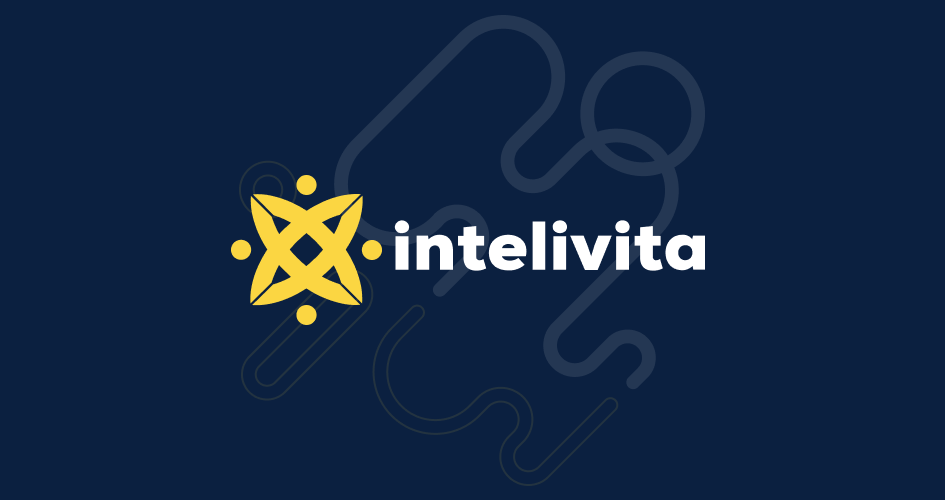Ever wondered what makes a website truly exceptional?
Behind every remarkable website or application lies a cohesive group of individuals, each bringing their unique skills and perspectives to the table.
In this blog, we’re diving into the nitty-gritty of forming your very own dream team for web development.
Let’s get started!
What is a Web Development Team
A web development team represents a cohesive group of professionals dedicated to conceptualizing, designing, building, and maintaining websites and web applications.
Comprised of individuals with diverse skill sets and expertise, a web development team typically includes front-end developers, back-end developers, UI/UX designers, graphic designers, project managers, quality assurance testers, and sometimes content creators or SEO specialists.
Each member contributes their specialized knowledge and talents to different phases of the web development lifecycle, ensuring the creation of functional, visually appealing, and user-friendly online platforms.
The Importance of Assembling a Strong Web Development Team
Assembling a strong web development team is paramount to the success of any digital project, regardless of its scope or complexity.
Several key reasons highlight the critical importance of ensuring the team’s strength and effectiveness:
Expertise and Specialization
A diverse team brings together individuals with specialized skills in various facets of web development, including coding languages, design principles, and project management methodologies.
This collective expertise enables the team to tackle complex challenges and deliver high-quality solutions tailored to meet client requirements.
Efficiency and Productivity
A well-assembled team operates cohesively, leveraging each member’s strengths to streamline the website development process.
Clear delineation of roles and responsibilities minimizes redundancy and maximizes efficiency, ensuring timely delivery of projects without compromising on quality.
Innovation and Creativity
Collaboration among team members fosters an environment conducive to innovation and creative problem-solving.
Encouraging open communication and idea-sharing, a strong team can brainstorm innovative solutions, explore new technologies, and implement cutting-edge design trends to enhance the user experience and stay ahead of the competition.
Quality Assurance and Testing
A robust web development team includes dedicated quality assurance testers who meticulously review and test the functionality, performance, and compatibility of web applications across different devices and browsers.
Rigorous testing procedures help identify and rectify any bugs or inconsistencies, ensuring the final product meets the highest standards of quality and reliability.
Client Satisfaction and Long-Term Success
Assembling a strong team that is capable of delivering exceptional results, web development agencies or organizations can foster client satisfaction and build long-term relationships.
Satisfied clients are more likely to recommend their services and return for future projects, contributing to the team’s reputation and continued success in the competitive digital marketplace.
Understanding the Roles of a Web Development Team
Front-end Developer
- Responsible for implementing the visual and interactive elements of a website or web application.
- Utilizes languages such as HTML, CSS, and JavaScript to create user-facing components.
- Ensures the website or application is responsive, accessible, and optimized for various devices and browsers.
Back-end Developer
- Manages the server-side logic and database interactions of a web application.
- Develops server-side scripts using languages like Python, Ruby, PHP, or Node.js.
- Handles data storage, user authentication, and server configuration to support the functionality of the front-end.
Full-stack Developer
- Possesses expertise in both front-end and back-end development.
- Capable of handling all aspects of web development, from designing user interfaces to managing server infrastructure.
- Provides versatility and flexibility in addressing project requirements across the entire development stack.
UI/UX Designer
- Focuses on creating intuitive and visually appealing user interfaces that enhance the overall user experience.
- Collaborates with front-end developers to translate design concepts into interactive web elements.
- Conducts user research, wireframing, and prototyping to inform design decisions and optimize usability.
Project Manager
- Oversees the planning, execution, and delivery of web development projects.
- Coordinates communication among team members, sets project timelines, and allocates resources.
- Acts as a liaison between clients and the development team, ensuring project requirements are met within budget and schedule constraints.
Quality Assurance Engineer
- Conducts thorough testing of web applications to identify and address any defects or issues.
- Develops test plans, executes test cases, and reports bugs to the development team for resolution.
- Performs regression testing and ensures the overall quality and stability of the final product.
DevOps Engineer
- Manages the deployment, configuration, and maintenance of web development infrastructure.
- Implements automation tools and processes to streamline development workflows and improve efficiency.
- Monitors system performance, troubleshoots issues, and implements security measures to safeguard data and applications.
Content Strategist
- Develops content plans and strategies to align with the goals and target audience of the website or application.
- Collaborates with designers and developers to ensure content is integrated effectively into the user interface.
- Optimizes content for search engines (SEO) and user engagement to enhance the overall performance of the website.
Skills and Expertise Required for Each Web Development Team Role
- Front-end Developer: Proficiency in HTML, CSS, JavaScript, familiarity with front-end frameworks (e.g., React, Angular, Vue.js).
- Back-end Developer: Proficiency in server-side programming languages (e.g., Python, Ruby, PHP, Node.js), database management (e.g., SQL, NoSQL), knowledge of server infrastructure.
- Full-stack Developer: Proficiency in both front-end and back-end technologies, ability to integrate and optimize across the entire development stack.
- UI/UX Designer: Proficiency in design software (e.g., Adobe XD, Sketch, Figma), knowledge of user interface design principles and usability best practices.
- Project Manager: Strong organizational and communication skills, experience with project management tools (e.g., Jira, Trello, Asana), leadership and team management abilities.
- Quality Assurance Engineer: Strong attention to detail, proficiency in testing methodologies and tools (e.g., Selenium, Jest, Postman), analytical and problem-solving skills.
- DevOps Engineer: Proficiency in system administration and configuration management tools (e.g., Docker, Kubernetes, Ansible), knowledge of cloud computing platforms (e.g., AWS, Azure, Google Cloud).
- Content Strategist: Strong writing and editing skills, understanding of SEO principles and content management systems (e.g., WordPress, Drupal), ability to analyze and interpret data for content optimization.
Identifying Additional Roles Based on Project Requirements
Depending on the specific needs of a project, additional roles such as SEO Specialist, Data Analyst, or Cybersecurity Expert may be necessary to address specific requirements or challenges.
Collaborate with stakeholders to assess project goals, budget constraints, and timeline considerations to determine the optimal composition of the web development team.
Flexibility in identifying and integrating additional roles ensures that the team is well-equipped to handle diverse project requirements and deliver successful outcomes.
11 Easy Steps to Build a Web Development Team
Step #1. Defining Project Goals and Objectives
Before assembling a web development team, it is imperative to establish clear and measurable project goals and objectives.
These goals serve as the guiding principles that drive the entire development process.
Key considerations include identifying the purpose of the website or web application, defining target audience demographics and user needs, and establishing specific deliverables and success criteria.
Step #2. Assessing Project Scope and Complexity
Understanding the scope and complexity of the project is essential for resource allocation, timeline estimation, and risk management.
Key considerations include identifying required features and functionalities, assessing integration needs with third-party systems or APIs, and anticipating potential scalability requirements for future growth.
Step #3. Determining Budget and Timeline
Setting a realistic budget and timeline is crucial for project planning and resource allocation.
Key factors to consider include estimating development costs based on project scope and required resources, establishing a timeline that aligns with project milestones and client expectations, and identifying potential cost-saving measures or trade-offs to stay within budget constraints.
Step #4. Understanding Team Dynamics and Communication Channels
Effective communication and collaboration are essential for the success of any web development project.
Considerations include assessing team members’ communication preferences and technology proficiency, establishing clear communication channels and protocols for regular updates, meetings, and feedback, and fostering a culture of transparency, accountability, and mutual respect among team members.
Step #5. Identifying Potential Risks and Mitigation Strategies
Anticipating and mitigating potential risks is critical for minimizing project disruptions and ensuring successful outcomes.
Considerations include conducting a thorough risk assessment to identify potential challenges and vulnerabilities, developing contingency plans and mitigation strategies for high-impact risks, and proactively monitoring and addressing emerging risks throughout the project lifecycle.
Step #6. Recruiting and Hiring Process
Crafting Job Descriptions
Crafting detailed and accurate job descriptions is the first step in attracting qualified candidates who possess the necessary skills and experience.
Key components of effective job descriptions include clearly outlining roles, responsibilities, and required qualifications, highlighting specific technical skills, programming languages, and software tools, and describing the company culture, values, and team dynamics to attract candidates who are a good fit.
Sourcing Candidates
Once job descriptions are finalized, sourcing candidates through various channels increases the pool of potential talent.
Strategies for sourcing candidates include posting job listings on relevant job boards, professional networking sites, and social media platforms, leveraging employee referrals and networking events to tap into personal and professional networks, and engaging with recruitment agencies and industry-specific communities to identify passive candidates.
Screening and Interviewing Applicants
Screening and interviewing applicants help assess their qualifications, experience, and suitability for the role.
Key steps in the screening and interview process include reviewing resumes and portfolios to evaluate candidates’ technical skills and project experience, conducting initial phone or video screenings to assess communication skills, professionalism, and interest in the role, and scheduling in-person or virtual interviews with hiring managers and team members to delve deeper into candidates’ backgrounds and assess cultural fit.
Evaluating Technical Skills and Cultural Fit
Evaluating candidates’ technical skills and cultural fit is essential for building a cohesive and high-performing team.
Strategies for assessing technical skills and cultural fit include administering technical assessments, coding challenges, or take-home assignments to evaluate candidates’ proficiency in relevant web development languages and technologies, incorporating behavioral and situational questions during web developer interviews to assess candidates’ problem-solving abilities, teamwork skills, and alignment with company values, and encouraging candidates to ask questions and engage in conversations about team dynamics, company culture, and career development opportunities.
Making the Final Selection
After thorough evaluation and consideration, making the final selection involves choosing the candidate who best meets the requirements of the role and aligns with the team’s goals and values.
Key considerations for making the final selection include reviewing feedback from interviewers and stakeholders to assess candidates’ strengths, weaknesses, and overall fit, conducting reference checks to validate candidates’ qualifications, experience, and work ethic, extending a job offer to the selected candidate, outlining compensation, benefits, and expectations for the role, and communicating with unsuccessful candidates in a respectful and transparent manner, providing constructive feedback and maintaining positive relationships for future opportunities.
Step #7. Fostering Collaboration and Communication
Establishing Clear Channels of Communication
Effective communication is the cornerstone of successful collaboration within a web development team.
Establishing clear channels of communication ensures that team members can easily exchange information, share updates, and address issues in a timely manner.
Key strategies include utilizing communication platforms such as Slack, Microsoft Teams, or Discord for real-time messaging and team collaboration, setting up dedicated project communication channels or threads to centralize discussions and document decisions, and establishing protocols for email communication, ensuring clarity, brevity, and responsiveness.
Implementing Project Management Tools and Methodologies
Project management methodologies and tools for web development play a vital role in coordinating tasks, tracking progress, and ensuring project delivery on time and within budget.
Key considerations include selecting project management software such as Jira, Asana, or Trello to organize tasks, assign responsibilities, and track milestones, adopting agile or scrum methodologies to facilitate iterative development, continuous improvement, and adaptive planning, and providing training and support to team members to ensure proficiency and adherence to project management practices.
Conducting Regular Stand-up Meetings and Progress Updates
Regular stand-up meetings and progress updates help keep team members informed, aligned, and accountable for their contributions to the project.
Key practices include holding daily or weekly stand-up meetings to discuss project status, identify obstacles, and synchronize efforts, providing brief progress updates during stand-up meetings, focusing on accomplishments, challenges, and next steps, and leveraging video conferencing tools for remote team members to foster face-to-face communication and collaboration.
Encouraging Knowledge Sharing and Skill Development
Encouraging knowledge sharing and skill development promotes a culture of continuous learning and improvement within the team.
Strategies for fostering knowledge sharing and skill development include organizing lunch-and-learn sessions, workshops, or brown bag sessions to share insights, best practices, and lessons learned, establishing mentorship or buddy programs to facilitate peer learning and professional development, and providing access to online learning platforms, training resources, and certification programs to support skill enhancement and career advancement.
Step #8. Creating an Environment for Success
Providing Adequate Resources and Tools
Providing adequate resources and tools is essential for empowering team members to perform their best work and achieve project objectives.
Key considerations include ensuring access to necessary hardware, software, and development environments, investing in training, professional development, and certification programs to enhance team members’ skills and capabilities, and allocating sufficient time and budget for research, experimentation, and innovation.
Offering Continuous Feedback and Support
Offering continuous feedback and support helps team members grow, develop, and overcome challenges effectively.
Key practices include providing regular performance reviews, constructive feedback, and coaching sessions to help team members identify areas for improvement and set goals for growth, offering mentorship, guidance, and emotional support to assist team members in navigating challenges, managing stress, and maintaining motivation, and creating a culture of psychological safety where team members feel comfortable sharing ideas, asking questions, and seeking help without fear of judgment or reprisal.
Promoting a Culture of Accountability and Ownership
Promoting a culture of accountability and ownership fosters a sense of responsibility, autonomy, and pride in the work produced by the team.
Key strategies include establishing clear expectations, goals, and performance metrics for individual team members and the team as a whole, encouraging open dialogue, transparency, and collaboration to address issues, resolve conflicts, and find solutions collectively, and recognizing and celebrating achievements, milestones, and contributions to reinforce a culture of excellence and teamwork.
Recognizing and Rewarding Team Achievements
Recognizing and rewarding team achievements reinforces positive behaviors, boosts morale, and strengthens team cohesion.
Key approaches include acknowledging individual and collective contributions through verbal praise, written commendations, or public recognition, offering tangible rewards such as bonuses, promotions, or special perks to incentivize exceptional performance and foster a culture of appreciation, and organizing team-building activities, social events, or retreats to celebrate successes, build camaraderie, and strengthen bonds among team members.
Step #9. Navigating Challenges and Resolving Conflicts
Addressing Differences in Opinions and Approaches
Differences in opinions and approaches are common in collaborative environments but can lead to conflicts if not managed effectively.
Strategies for addressing these differences include encouraging open dialogue and active listening to understand varying perspectives, finding common ground and compromises that align with project goals and objectives, and facilitating constructive discussions and consensus-building exercises to reach mutually beneficial solutions.
Managing Scope Creep and Changing Requirements
Scope creep and changing requirements can disrupt project timelines and budgets if not managed proactively.
Effective strategies for managing scope creep and changing requirements include establishing clear project scope and requirements upfront and documenting any changes through a formal change control process, prioritizing requirements based on business value and impact to ensure focus on essential features, and communicating changes transparently with stakeholders and revisiting project plans to adjust timelines and resources as needed.
Handling Technical Issues and Bottlenecks
Technical issues and bottlenecks can impede progress and derail project momentum if not addressed promptly.
Key strategies for handling technical issues and bottlenecks include identifying root causes of technical issues through thorough analysis and troubleshooting, leveraging team expertise and collaboration to brainstorm solutions and implement fixes efficiently, and implementing proactive measures such as code refactoring, performance optimization, and infrastructure scaling to prevent recurring issues.
Resolving Interpersonal Conflicts and Team Frictions
Interpersonal conflicts and team frictions can undermine morale and productivity if left unaddressed.
Effective approaches for resolving conflicts and fostering positive team dynamics include facilitating open and honest communication to address underlying issues and misunderstandings, encouraging empathy, respect, and appreciation for diverse perspectives and working styles, and mediating conflicts through impartial third-party interventions or team-building exercises to promote understanding and reconciliation.
Step #10. Ensuring Quality and Efficiency
Implementing Best Practices and Standards
Implementing best practices and standards ensures consistency, reliability, and maintainability of code and deliverables.
Key practices include adhering to coding standards and conventions to promote readability, maintainability, and collaboration, following design principles and architectural patterns to ensure scalability, flexibility, and modularity, and documenting code, processes, and system architecture to facilitate knowledge sharing and onboarding.
Conducting Code Reviews and Quality Assurance Testing
Code reviews and quality assurance testing are essential for identifying and rectifying defects and ensuring the overall quality of deliverables.
Effective practices include conducting peer code reviews to identify bugs, security vulnerabilities, and opportunities for improvement, performing comprehensive quality assurance testing, including unit tests, integration tests, and user acceptance testing, to validate functionality and performance, and incorporating automated testing tools and continuous integration pipelines to streamline testing processes and detect issues early in the development cycle.
Utilizing Automation Tools, Continuous Integration and Continuous Delivery
Automation tools and continuous integration/delivery practices improve efficiency, consistency, and reliability of development workflows.
Key strategies include implementing automated build, test, and deployment pipelines to accelerate delivery and reduce human error, utilizing version control systems and configuration management tools to track changes and maintain consistency across environments, and adopting infrastructure-as-code practices to automate provisioning, configuration, and management of development, testing, and production environments.
Iterative Development and Agile Methodologies
Iterative development and agile methodologies enable adaptive planning, collaboration, and responsiveness to changing requirements.
Effective approaches include breaking down projects into smaller, manageable iterations or sprints to deliver incremental value and gather feedback early and often, holding regular sprint planning, review, and retrospective meetings to align priorities, assess progress, and identify opportunities for improvement, and embracing principles of agility, such as customer collaboration, embracing change, and delivering working software, to foster adaptability and innovation.
Step #11. Adapting to Evolving Technologies and Trends
Staying Updated with Latest Web Development Technologies
Staying updated with the latest web development technologies ensures relevance, competitiveness, and innovation.
Strategies for staying abreast of evolving technologies include actively following industry blogs, forums, and publications to stay informed about emerging trends and advancements, participating in conferences, workshops, and webinars to learn about new tools, frameworks, and techniques, and experimenting with sandbox projects and personal side projects to explore and practice new technologies hands-on.
Investing in Continuous Learning and Training Programs
Investing in continuous learning and training programs fosters skill development, career growth, and organizational resilience.
Effective approaches include offering professional development stipends, courses, and certifications to support ongoing learning and skill enhancement, facilitating knowledge-sharing sessions, workshops, and mentorship programs to encourage peer learning and collaboration, and providing access to online learning platforms and resources to accommodate diverse learning styles and preferences.
Experimenting with Emerging Trends and Techniques
Experimenting with emerging trends and techniques allows teams to innovate, differentiate, and stay ahead of the curve.
Strategies for experimentation include allocating time for research and experimentation within project timelines to explore new technologies and methodologies, encouraging team members to propose and pilot new ideas, tools, and approaches through proof-of-concept projects, and monitoring industry trends, market demands, and competitor strategies to identify opportunities for innovation and differentiation.
Future-proofing Projects and Skillsets
Future-proofing projects and skillsets involves anticipating and preparing for future challenges, opportunities, and disruptions.
Key considerations include building flexible, modular, and scalable architectures that can adapt to evolving requirements and technologies, cultivating a culture of lifelong learning, adaptability, and resilience to navigate uncertain and dynamic environments, and fostering cross-functional collaboration and interdisciplinary skills to address complex challenges and drive innovation.
Looking to Hire Web Developers?
As organizations continue to prioritize digital transformation and online presence, the demand for skilled web development professionals continues to rise.
Investing in talent acquisition, training, and team-building initiatives, businesses can assemble dynamic teams capable of delivering innovative, high-quality web solutions that meet client needs and exceed expectations.
Nevertheless, building and sustaining effective web development teams is a multifaceted endeavor that requires careful planning, strategic execution, and ongoing commitment.
Fostering an environment where team members feel empowered, supported, and valued, organizations can unleash the full potential of their web development teams and drive sustainable growth and innovation.
Are you looking to hire talented website developers for business?
Our team of web development experts is here to help.
Whether you need assistance with website design, custom web application development, or web development consulting, we have the knowledge, skills, and experience to bring your vision to life.
Contact us today to learn more about our services and how we can support your web development initiatives.




